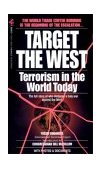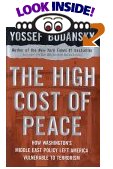|
1955: |
Atomic Energy Commission
(PAEC) set up to promote peaceful uses of atomic energy |
|
1972: |
Pakistan
set up first nuclear power station with Canadian assistance. |
|
1974: |
Prime Minister Z. A.
Bhutto vowed Pakistan will “eat grass” if necessary to develop nuclear
weapons after India exploded its first nuclear device. |
|
1976: |
Canada
ended N-ties with Pakistan in a dispute over non-proliferation safeguards. |
|
1976: |
Pakistan
set up Kahuta Research Laboratories near
Islamabad
to establish a uranium enrichment plant to seek nuclear capability. |
|
1979: |
The U. S. cut off
military-economic aid to
Pakistan
after refusing to accept assurances that its nuclear program was purely
peaceful. |
|
1980: |
Pakistan
said it joined ranks of a dozen countries able to fabricate its own nuclear
fuel based on uranium available in the country. |
|
1982: |
The U. S. lifted embargo
on resumption of economic and military aid to Pakistan. |
|
1983: |
Dutch court sentenced A.
Q. Khan to four years’ jail after he was convicted in absentia of nuclear
espionage. Decision was later overturned on a technicality. Khan denied
allegations that he stole plans for uranium enrichment centrifuges from
Urenco, a British-Dutch-German consortium he worked for in
Holland
in the 19070s. |
|
1986: |
Pakistan
and Iran signed nuclear cooperation agreement after visit by A. Q. Khan. |
|
1989: |
PAEC chairman Munir Ahmed
Khan said a nuclear deal with China in November for a 300-megawatt nuclear
plant had broken an international embargo against Pakistan. |
|
1990: |
August: Two months
after Iraq invaded Kuwait, an intermediary claiming to represent A. Q. Khan
met Iraqi intelligence and proposed help in establishing a project to enrich
uranium and build a nuclear weapon. Pakistan later denied this.
October: The
U. S.
stopped military-economic aid to
Pakistan
over suspicions that its nuclear program was weapons-oriented. |
|
1991: |
Pakistan Army chief
General Mirza Aslam Beg told U. S. ambassador he was discussing nuclear and
conventional military cooperation with Iranian army. |
|
1992: |
U. S.
officials said A. Q. Khan initiated talks with North Korea to obtain
intermediate-range ballistic missiles for Pakistan in return for gas
centrifuge designs and other assistance to enrich uranium for nuclear
weapons. |
|
1998: |
Pakistan
test-fired 937-mile range Ghauri missile, which it said can carry nuclear
warheads and was meant to deter
India. |
|
1998: |
India
conducted five nuclear tests. Pakistan expressed alarm and then stunned the
world by conducting six nuclear bomb tests. Both countries were sanctioned. |
|
2001: |
Dictator Pervez Musharraf
removed A. Q. Khan as head of Pakistan’s nuclear programs and named him as
scientific adviser. |
|
2003: |
Pakistan
said it was questioning nuclear scientists over allegations of proliferation
– acting on information from Iran and Muhammad Gadaffi-ruled Libya to the U.
N.’s International Atomic Energy Agency. |
|
2004: |
January: Probe led
to removal of A. Q. Khan as Scientific Adviser to Prime Minsiter.
February 4: Khan
appeared on state television to make personal apology to the nation for
endangering national security by taking nuclear secrets to Libya, Iran and
North Korea.
February 5:
Pakistani Dictator Pervez Musharraf pardoned nuclear proliferator A. Q.
Khan.
October 12:
Pakistan
tested another medium-range nuclear capable missile. The The Hatf-V Ghauri
missile has a range of 1500 Km and can carry nuclear warheads.
November 29:
Pakistan successfully tested the short-range Ghaznavi
ballistic missile that is capable of carrying both nuclear and conventional
warheads. This was the third test of the surface-to-surface missile, also
known as Hatf-III, which has a range of 290 km. The test was part of a
series to be conducted to verify certain parameters and to refine different
subsystems of the missile. The data collected during the test indicated that
the design and parameters had been successfully validated.
December 8: Pakistan carried out a “successful”
test firing of its indigenously developed, medium-range surface-to-surface
ballistic missile, Hatf-IV/Shaheen I. A press statement by the Inter-
Services Public Relations department said: “The missile is capable of
reaching targets up to 700 km. This is the second test in less than 10 days
by Pakistan. |


